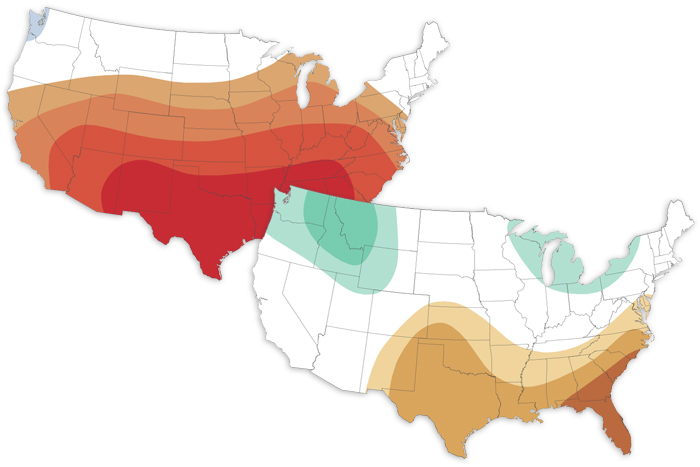A record-warm autumn boosted Arctic 2020-21 surface temperatures to the rank of seventh-warmest year on record since 1900.
Climate change is transforming the Arctic into a ‘dramatically different state.’ Browse this collection of image highlights from NOAA's 2021 Arctic Report Card.
Dry conditions were unusually widespread, and total drought area increased by more than 5 percent.
As we enter our second La Niña winter in a row, our blogger explains what we know about the chances for a three-peat. (TL;DR: possible, but not statistically likely.)

The December 2021 climate outlook favors a warmer-than-average end to 2021 for much of the country, with odds tilted towards a drier-than-average December for the Southeast

What weather can the U.S. expect in the second winter of a double-dip La Niña? The Climate Prediction Center’s Mike Halpert lays it out in his discussion of the November update to NOAA’s winter outlook.
But the Montreal Protocol is working: the hole in our planet’s UV-blocking ozone layer was smaller than those of the 1990s and 2000s.
Northern Hemisphere land areas were record warm, and La Niña left its imprint on global precipitation patterns.

If ENSO is a romantic comedy, our ocean-atmosphere couple is in an on-again phase, and they're expected to stay together through the winter.
Atmospheric rivers and a powerful Nor'easter brought significant precipitation to the U.S. in October. East of the Rockies, most of the country was warmer than average.